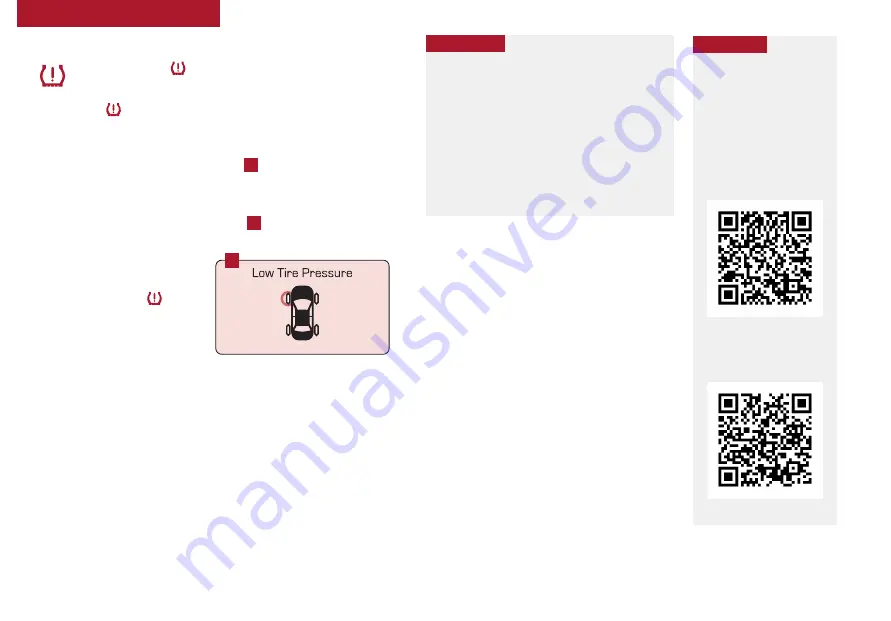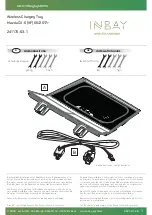
5
ALWAYS CHECK THE OWNER’S MANUAL FOR COMPLETE OPERATING INFORMATION AND SAFETY WARNINGS
*IF EQUIPPED †LEGAL DISCLAIMERS ON BACK INSIDE COVER
To view these videos on
your mobile device, snap
these QR Codes or visit the
listed websites
Refer to page 2 for more
information
Tire Pressure Monitoring
System Video
Fuel Economy Video
QR CODES
www.youtube.com/KiaFeatureVideos
www.youtube.com/KiaFeatureVideos
Tire Pressure Monitoring System (TPMS)
*
†27
The TPMS indicator functions as both Low Tire Pressure Light
and TPMS Malfunction Indicator
The indicator is designed to illuminate if it detects one or more
tires is significantly underinflated, the vehicle has a spare tire installed
without TPMS or the outside temperature becomes significantly lower
The Low Tire Pressure Position Indicator
A
is displayed on the LCD
screen in the Instrument Cluster when the tire(s) are underinflated
Inflate tire(s) to specifications using an accurate digital tire pressure
gauge to turn off Low Tire Pressure Light
A
See front driver’s door
jamb for PSI specification
When there is a problem
with the TPMS, the TPMS
Malfunction Indicator will
blink for approximately one
minute then illuminate
See dealer for service
•
Even with TPMS, tire pressure should be checked
manually at least once a month Only adjust tire
pressure on “cold tires”
•
For proper maintenance and optimal fuel
economy, maintain recommended tire inflation
pressures and stay within the load limits and
weight distribution recommended for your vehicle
•
In winter or cold weather, the TPMS light may
illuminate if the tire pressure was adjusted to
the recommended tire inflation pressure during
warm weather
QUICK TIPS
REMINDERS:
• Check the recommended tire pressure label located on the
left side of driver's door jam, visible when the door is open
•
Consult your dealer for service if Low Tire Pressure Light
remains illuminated after inflating your tire(s)
Fuel Economy
There are several factors that contribute to your vehicle’s fuel economy, including maintenance of your vehicle, driving style,
environmental conditions, vehicle weight and vehicle aerodynamics Below are tips on how to help improve fuel economy:
• Keep your vehicle in good condition with
regular maintenance
• Don’t let the engine idle longer than necessary
• Drive at a moderate speed, accelerating smoothly
and at a moderate rate
• Keep tires inflated to the recommended pressure
• Travel lightly, without carrying unnecessary weight
in your vehicles
• Avoid placing large or heavy items on roof racks
• Avoid hilly, winding or poorly maintained roads
For more information on Fuel Economy, you can snap the QR Code above to view a video or refer to the Owner's Manual.
25
32
32
32
A
INSTRUMENT CLUSTER








































